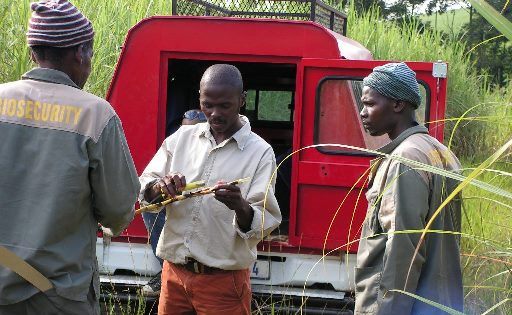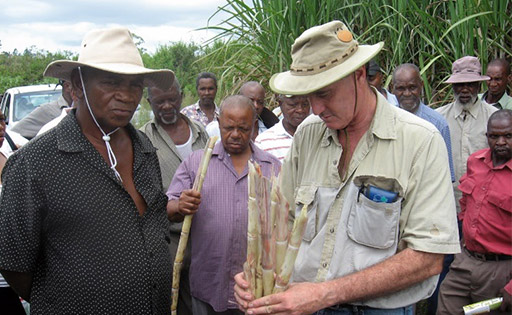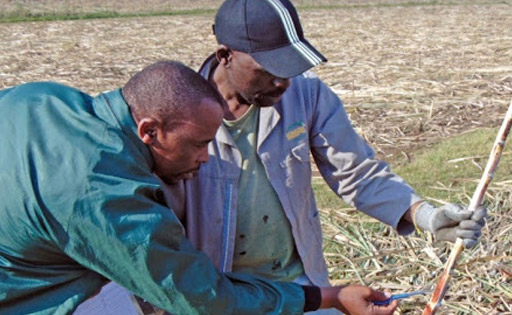Pest Control
INTEGRATED PEST MANAGEMENT
Several pests affect sugarcane but, fortunately, there are only a few major pests that cause serious economic harm. Insect pests are usually grouped into four broad categories, namely Leaf Eaters, Leaf Suckers, Stem Borers and Soil Pests. The Stalk Borer, Eldana, is the industry’s most serious pest, resulting in a total loss (direct and indirect) of over R 1 billion per season, if uncontrolled.
SASRI advocates an Integrated Pest management (IPM) approach to suppressing insect pest levels. IPM involves integration of several pest control techniques to discourage the development of pest populations and to keep pesticide usage at levels that are economically justified and environmentally responsible.
INFORMATION SHEETS
Books
Thrips and YSA Control Manual
This manual serves as a valuable resource for growers, equipping them with the knowledge and tools necessary for the identification of Thrips and YSA. Moreover, it offers a wealth of practical guidance on control measures for these pests, including the optimisation of natural habitats, the reduction of plant stress through the management of soil physical and biological health, the selection of suitable crop varieties, and the implementation of sound field hygiene practices.
The manual highlights the importance of adjusting planting dates to minimise the risk of infestations and emphasises the critical role of proper nutrition management.
Growers are strongly encouraged to regularly scout their fields for the presence of these pests and are provided with expert advice on the judicious use of registered insecticides for the control of Thrips and YSA.
Controlling eldana in the South African sugar industry
The manual covers the following best management practices for eldana control:
Manage the natural habitat of eldana
Choose appropriate varieties
Use only clean, healthy seedcane
Reduce plant stress
Ensure adequate silicon uptake
Manage nitrogen applications
Select carry-over fields carefully
Defoliate carry-over fields
Conduct regular surveys
Use of insecticide in carry-over fields
Chemical cane quality management
Practise stringent field hygiene
Abide by local pest, disease and variety control committee regulations and guidelines
IPM for eldana control
This book represents far more than a collection of best management practices for eldana control. Rather, it has been written for those who wish to get a deeper insight into the mechanisms that govern the interactions between eldana, the sugarcane crop and the various practices recommended for control of this pest. For this purpose, it has been necessary to include a high level of technical detail, and to draw on several other SASRI publications to describe the complex interactions at play.
Sugarcane pests in Southern Africa
Described in this bulletin are insect pests that most frequently damage sugarcane in southern Africa. Pests have been categorised by the type of damage they cause and are considered in order of their importance in the industry. Guidelines are Included for control of these pests. However, confirmation of pest identity and control options from SASRI specialists are advisable before taking action. Symptoms of damage can be similar for different pests and expensive control options may be implemented where not necessary.
ILLUSTRATIVE GUIDES
Videos
Damage caused by eldana (isiZulu)
Role of Pest and Disease Committees (isiZulu)
Services
Biosecurity
SASRI’s Biosecurity staff work together with Local Pest, Disease and Variety Control Committees to prevent or minimise loss and damage caused by pests and diseases.
Extension and Biosecurity Service
SASRI Extension Specialists located throughout the South African sugar industry are available to offer advice and support on crop nutrition and all other aspects of sugarcane farming.
RESEARCH
Research on pest control develops integrated management strategies that minimise the effects of pests on crop production in a sustainable manner. Visit CROP PROTECTION for more info.
Subscribe to our News Alerts to receive our latest information.




